#Nonviolent protest
Explore tagged Tumblr posts
Text
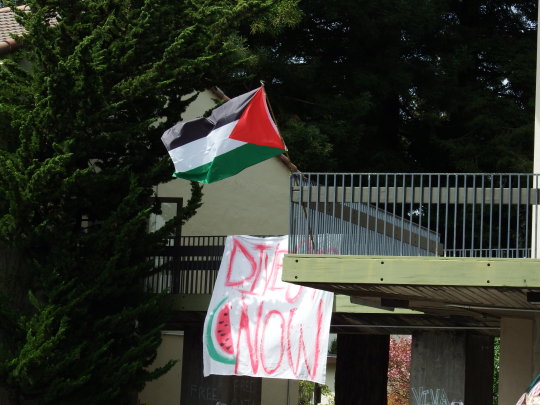

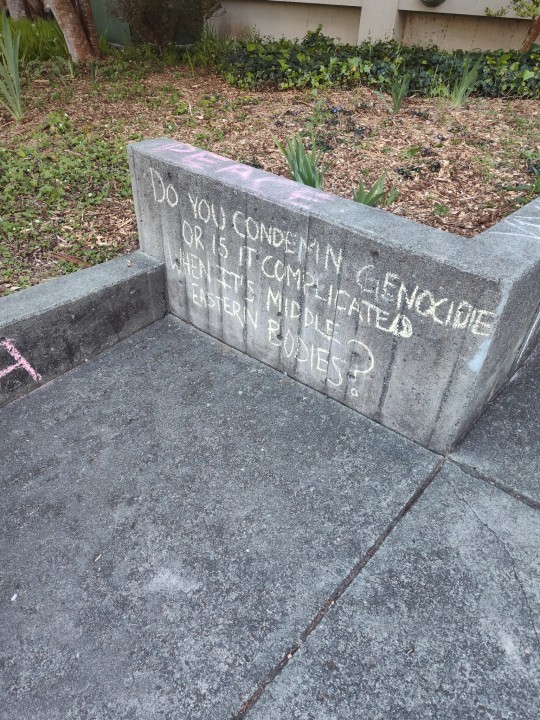
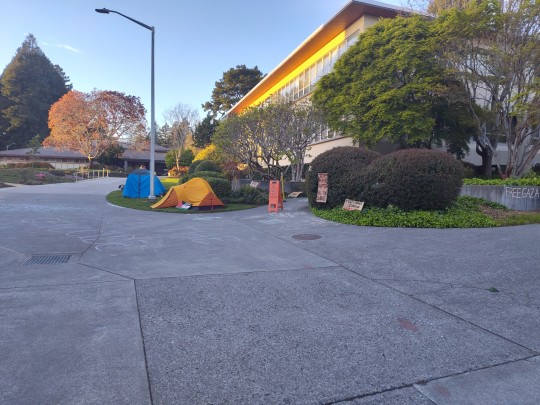
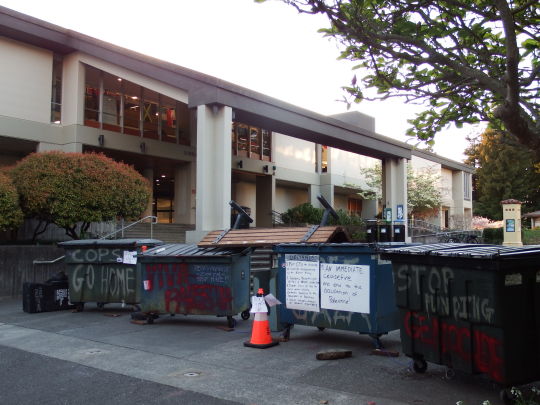
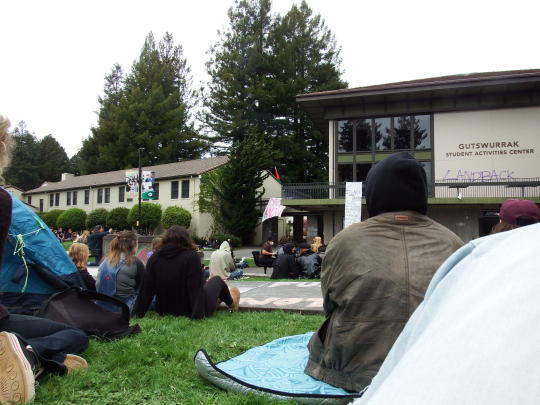
Cal Poly Humboldt, April 24th 2024
#palestine#gaza#free gaza#college protests#gaza solidarity encampment#NYU#columbia university#cal poly humboldt#news#israel#nonviolent protest#free palestine#from the river to the sea palestine will be free
78 notes
·
View notes
Text

Watch the video of the protest here on X. And if you're in LA, avoid Mauro Cafe. The owner, Evelyn Joan, is pictured above.
21 notes
·
View notes
Text
"There is a time when the operation of the machine becomes so odious, makes you so sick at heart, that you can't take part! You can't even passively take part! And you've got to put your bodies upon the gears and upon the wheels ... upon the levers, upon all the apparatus, and you've got to make it stop! And you've got to indicate to the people who run it, to the people who own it, that unless you're free, the machine will be prevented from working at all!"
Mario Savio (December 8, 1942 – November 6, 1996) was an American activist and a key member of the Berkeley Free Speech Movement.
#Mario Savio#Operation of the Machine#Free Speech Movement#Berkeley protests#Civil rights activism#Anti-establishment#1960s counterculture#Student activism#Political resistance#Social justice#University of California Berkeley#Nonviolent protest#Radical democracy#Freedom of expression#Youth rebellion#Government criticism#Systemic oppression#Speech for change#Historical speeches#Grassroots movements#today on tumblr#quoteoftheday
4 notes
·
View notes
Text
Proverbs Daily Reflection – February 19 , 2025
Today's proverb surrounds James Farmer. God bless you all, around the world! here's just another spiritual tidbit for Black History Month. Blessings be upon you! #josephmekaelpageministries
Proverbs 19:1 (KJV)“Better is the poor that walketh in his integrity, than he that is perverse in his lips, and is a fool.” Reflection:James Farmer was a champion of civil rights. He was a founder of the Congress of Racial Equality (CORE). Farmer embodied integrity in the face of oppression. His commitment to nonviolent protest and equality speaks to the wisdom of Proverbs 19:1. Despite societal…
#Bible#Bible Study#Black History Month#Christian Reflection#civil rights movement#CORE#dailyprompt#faith#God#integrity#James Farmer#Jesus#Joseph#Joseph Mekael Page#Joseph mekael page ministries#Joseph-Mekael-Page#JosephMekaelPageMinistries#justice#Mekael#nonviolent protest#Proverbs#Proverbs 19:1#Proverbs Daily#Proverbs Daily blog#Proverbs Daily by Joseph Page#Proverbs Daily Devotional#Proverbs Daily reflection#righteousness#social justice#Spiritual Growth
0 notes
Text
youtube
"Nonviolent protests are twice as likely to succeed as armed conflicts—and those engaging a threshold of 3.5% of the population have never failed to bring about change. Overall, nonviolent campaigns were twice as likely to succeed as violent campaigns: they led to political change 53% of the time compared to 26% for the violent protests."
"Once around 3.5% of the whole population has begun to participate actively, success appears to be inevitable. “There weren’t any campaigns that had failed after they had achieved 3.5% participation during a peak event,” says Chenoweth – a phenomenon she has called the “3.5% rule”. Besides the People Power movement, that included the Singing Revolution in Estonia in the late 1980s and the Rose Revolution in Georgia in the early 2003."
— David Robson, BBC Future
“ Never underestimate the power of a small group of committed people to change the world. In fact, it is the only thing that ever has. ” — Margaret Mead
0 notes
Text
"With Donald Trump set to take office after a fear-mongering campaign that reignited concerns about his desire to become a dictator, a reasonable question comes up: Can nonviolent struggle defeat a tyrant?
There are many great resources that answer this question, but the one that’s been on my mind lately is the Global Nonviolent Action Database, or GNAD, built by the Peace Studies department at Swarthmore College. Freely accessible to the public, this database — which launched under my direction in 2011 — contains over 1,400 cases of nonviolent struggle from over a hundred countries, with more cases continually being added by student researchers.
At quick glance, the database details at least 40 cases of dictators who were overthrown by the use of nonviolent struggle, dating back to 1920. These cases — which include some of the largest nations in the world, spanning Europe, Asia, Africa and Latin America — contradict the widespread assumption that a dictator can only be overcome by violence. What’s more, in each of these cases, the dictator had the desire to stay, and possessed violent means for defense. Ultimately, though, they just couldn’t overcome the power of mass nonviolent struggle.
In a number of countries, the dictator had been embedded for years at the time they were pushed out. Egypt’s Hosni Mubarak, for example, had ruled for over 29 years. In the 1990s, citizens usually whispered his name for fear of reprisal. Mubarak legalized a “state of emergency,” which meant censorship, expanded police powers and limits on the news media. Later, he “loosened” his rule, putting only 10 times as many police as the number of protesters at each demonstration.
The GNAD case study describes how Egyptians grew their democracy movement despite repression, and finally won in 2011. However, gaining a measure of freedom doesn’t guarantee keeping it. As Egypt has shown in the years since, continued vigilance is needed, as is pro-active campaigning to deepen the degree of freedom won.
Some countries repeated the feat of nonviolently deposing a ruler: In Chile, the people nonviolently threw out a dictator in 1931 and then deposed a new dictator in 1988. South Koreans also did it twice, once in 1960 and again in 1987. (They also just stopped their current president from seizing dictatorial powers, but that’s not yet in the database.)
In each case people had to act without knowing what the reprisals would be...
It’s striking that in many of the cases I looked at, the movement avoided merely symbolic marches and rallies and instead focused on tactics that impose a cost on the regime. As Donald Trump wrestles to bring the armed forces under his control, for example, I can imagine picketing army recruiting offices with signs, “Don’t join a dictator’s army.”
Another important takeaway: Occasional actions that simply protest a particular policy or egregious action aren’t enough. They may relieve an individual’s conscience for a moment, but, ultimately, episodic actions, even large ones, don’t assert enough power. Over and over, the Global Nonviolent Action Database shows that positive results come from a series of escalating, connected actions called a campaign...
-via Waging Nonviolence, January 8, 2025. Article continues below.
East Germany’s peaceful revolution
When East Germans began their revolt against the German Democratic Republic in 1988, they knew that their dictatorship of 43 years was backed by the Soviet Union, which might stage a deadly invasion. They nevertheless acted for freedom, which they gained and kept.
Researcher Hanna King tells us that East Germans began their successful campaign in January 1988 by taking a traditional annual memorial march and turning it into a full-scale demonstration for human rights and democracy. They followed up by taking advantage of a weekly prayer for peace at a church in Leipzig to organize rallies and protests. Lutheran pastors helped protect the organizers from retaliation and groups in other cities began to stage their own “Monday night demonstrations.”
The few hundred initial protesters quickly became 70,000, then 120,000, then 320,000, all participating in the weekly demonstrations. Organizers published a pamphlet outlining their vision for a unified German democracy and turned it into a petition. Prisoners of conscience began hunger strikes in solidarity.
By November 1988, a million people gathered in East Berlin, chanting, singing and waving banners calling for the dictatorship’s end. The government, hoping to ease the pressure, announced the opening of the border to West Germany. Citizens took sledgehammers to the hated Berlin Wall and broke it down. Political officials resigned to protest the continued rigidity of the ruling party and the party itself disintegrated. By March 1990 — a bit over two years after the campaign was launched — the first multi-party, democratic elections were held.
Students lead the way in Pakistan
In Pakistan, it was university students (rather than religious clerics) who launched the 1968-69 uprising that forced Ayub Khan out of office after his decade as a dictator. Case researcher Aileen Eisenberg tells us that the campaign later required multiple sectors of society to join together to achieve critical mass, especially workers.
It was the students, though, who took the initiative — and the initial risks. In 1968, they declared that the government’s declaration of a “decade of development” was a fraud, protesting nonviolently in major cities. They sang and marched to their own song called “The Decade of Sadness.”
Police opened fire on one of the demonstrations, killing several students. In reaction the movement expanded, in numbers and demands. Boycotts grew, with masses of people refusing to pay the bus and railway fares on the government-run transportation system. Industrial workers joined the movement and practiced encirclement of factories and mills. An escalation of government repression followed, including more killings.
As the campaign expanded from urban to rural parts of Pakistan, the movement’s songs and political theater thrived. Khan responded with more violence, which intensified the determination among a critical mass of Pakistanis that it was time for him to go.
After months of growing direct action met by repressive violence, the army decided its own reputation was being degraded by their orders from the president, and they demanded his resignation. He complied and an election was scheduled for 1970 — the first since Pakistan’s independence in 1947.
Why use nonviolent struggle?
The campaigns in East Germany and Pakistan are typical of all 40 cases in their lack of a pacifist ideology, although some individuals active in the movements had that foundation. What the cases do seem to have in common is that the organizers saw the strategic value of nonviolent action, since they were up against an opponent likely to use violent repression. Their commitment to nonviolence would then rally the masses to their side.
That encourages me. There’s hardly time in the U.S. during Trump’s regime to convert enough people to an ideological commitment to nonviolence, but there is time to persuade people of the strategic value of a nonviolent discipline.
It’s striking that in many of the cases I looked at, the movement avoided merely symbolic marches and rallies and instead focused on tactics that impose a cost on the regime. As Donald Trump wrestles to bring the armed forces under his control, for example, I can imagine picketing army recruiting offices with signs, “Don’t join a dictator’s army.”
Another important takeaway: Occasional actions that simply protest a particular policy or egregious action aren’t enough. They may relieve an individual’s conscience for a moment, but, ultimately, episodic actions, even large ones, don’t assert enough power. Over and over, the Global Nonviolent Action Database shows that positive results come from a series of escalating, connected actions called a campaign — the importance of which is also outlined in my book “How We Win.”
As research seminar students at Swarthmore continue to wade through history finding new cases, they are digging up details on struggles that go beyond democracy. The 1,400 already-published cases include campaigns for furthering environmental justice, racial and economic justice, and more. They are a resource for tactical ideas and strategy considerations, encouraging us to remember that even long-established dictators have been stopped by the power of nonviolent campaigns.
-via Waging Nonviolence, January 8, 2025.
#Chile#Egypt#Germany#Pakistan#Protests#United States#us politics#fuck trump#authoritarianism#revolution#nonviolence#nonviolent resistance#protest#america#protests#democracy#elections#trump administration#good news#hope#hopepunk#hope posting
5K notes
·
View notes
Text
Fun for the whole cunt-ry!


62 notes
·
View notes
Text
Coming out to say I actually prefer alot of the 92sies soundtrack opose to the Livesies. I think some of the reason it's not as well liked is people not seeing the movie and the fact that it's of lower production quality.
The best way to sum this up is "Once And For All" where 92sies sing "Joe if your still counting sheep/wake up and read 'em and weep" to "Joe if your still counting sheep/we're gonna sing you to sleep"
Like what guys??? Livesies why is you message so boring that they guy you want, that you NEED, to hear you message the most will be so fucking bored he sleeps. What does that accomplish
#junk#newsies#theirs also the fact 92sies is about unification#every kid is our friend#every friend a brother#this aint just newsies no more#5 thousand reasons to try#and its thier first real actual nonviolent protest since the rally where they decided no more soaking#then in livesies they mostly focus on the newsies despite the childrens crusade being more than that#and they decent into violence after being relitively nonviolent the entire show#i can go into how violence and the result of staying nonviolent is so important to 92sies too but#and why i like that and how its fullfilling#but thats another post
59 notes
·
View notes
Photo
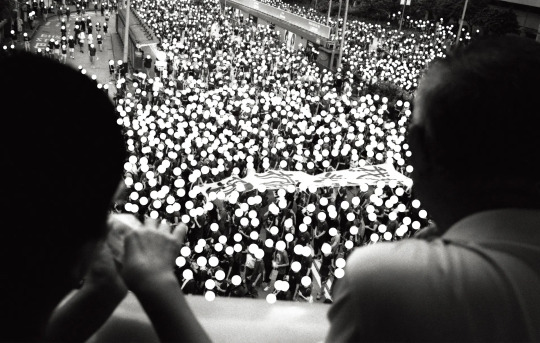
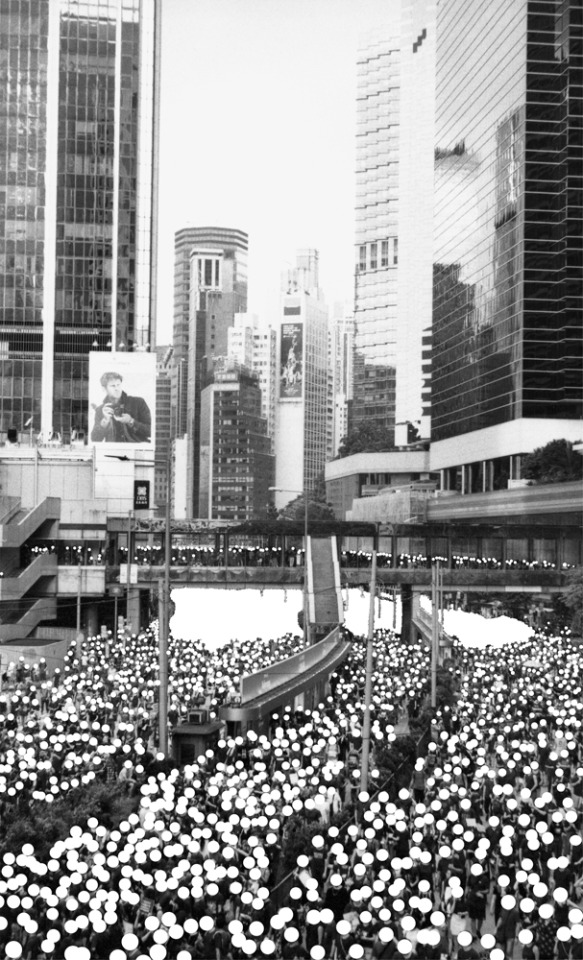
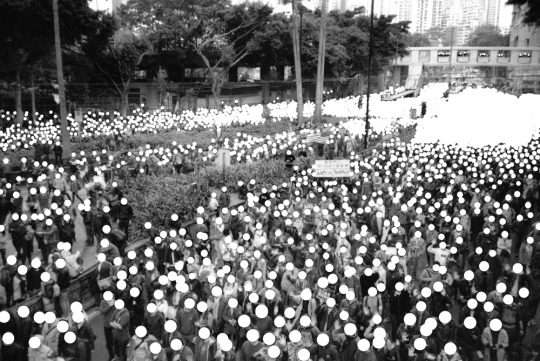
Clean Hong Kong Action, 2019 A series of images documenting the protests in Hong Kong with all the faces of the participants punched out to protect their identities. Photograph: Wai Hang Siu
#protest#nonviolence#activism#b&w#hong kong#monochrome#minimal#Photography#Lensblr#black and white#Aesthetic#Camera#Curators on tumblr#Peace
353 notes
·
View notes
Text
“Woman, life, freedom.” How the women of Iran protest the hijab
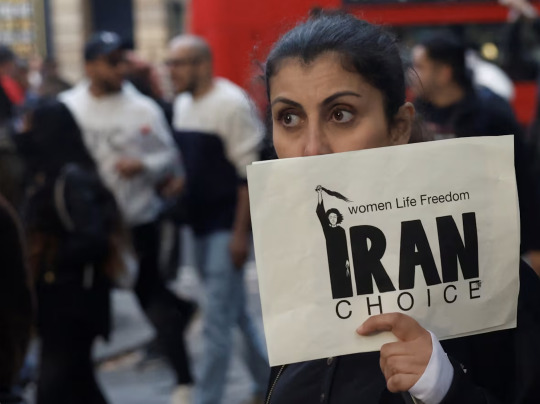
(Clodagh Kilcoyne/Reuters)
In September 2022, 22-year-old Mahsa Amini was arrested by morality police in Tehran, Iran, for refusing to wear a hijab. Hijabs have been mandatory in Iran for women since the revolution in 1979, when the Imperial State of Iran was replaced with the Islamic Republic. Only a month after the victory of the revolution, Iran's new head of state, Grand Ayatollah Ruhollah Khomeini, declared: “Sin is not allowed in Islamic Cabinet ministries. Women should not appear naked in the ministries. Women are allowed only with a hijab. There is no obstacle to them working but only if they wear the hijab as prescribed by Islamic law.”

(Aristotle Saris/AP Photo)
The following day, over 15,000 Iranian women celebrated International Women’s Day, gathering in front of the prime minister’s office in Tehran in protest against the mandatory hijab. As of 1983, Parliament has since passed the Islamic Penal Code, which establishes a punishment of “up to 74 lashes for women appearing without Islamic hijab in public.” In 1996, the law was revised and replaced with “physical punishment with incarceration and fines.”
In the case of Mahsa Amini, her suspicious death in police custody sparked massive outrage across the country, prompting widespread and large-scale protests. Videos were posted and spread online of Iranian women cutting their hair and burning their hijabs, which served as a powerful way to both protest the morality police responsible for Amini’s death and reject the policy of compulsory hijab. Iranians— both men and women, peacefully protested in the streets of Tehran, and in big and small towns across the country, chanting, “Woman, life, freedom.”
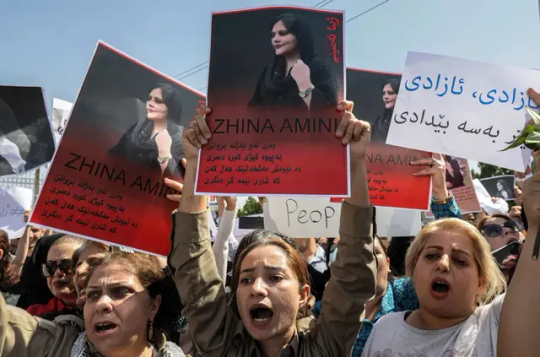
(Safin Hamed/AFP/GI)
While many of these protests have been shut down or lost traction and attention outside of Iran, political activism in the name of women's equality and freedom continues to thrive in different forms. Widely recognized imprisoned female activists continue to leak statements and voice recordings online, describing and criticizing their living conditions in prison and encouraging other activists to keep working. Discussions and online meetings continue to be held in private online forums such as Twitter, Telegram, and WhatsApp. The women of Iran continue to engage in quiet civil disobedience regardless of the risks or consequences.
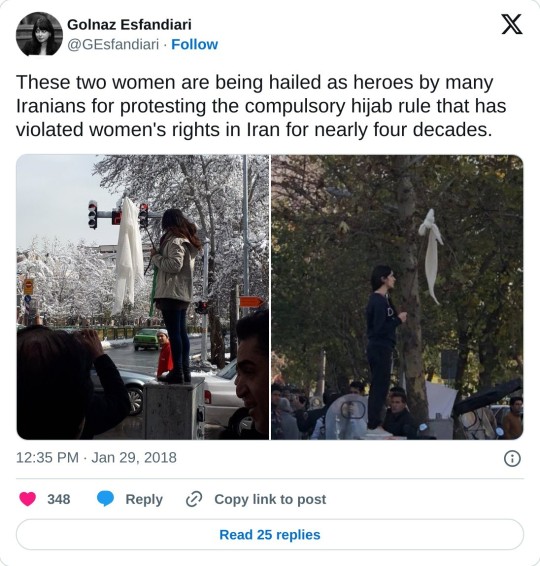
In 2017, five years before Mahsa Amini's death, a young woman named Vida Movahed climbed and stood on top of a utility box on one of Tehran's busiest streets. She stood, bareheaded—calmly waving her white scarf on a long stick. Her peaceful yet powerful display of defiance went viral, and photos soon circulated of other Iranian women taking off their headscarves in public. These acts of resistance contrast the violent treatment women like Mahsa Amini face at the hands of the Iranian government and police. They serve as an important example and reminder of the power the people can hold.
Kenyon, Peter. “Public Protests Are over but More Iranian Women Are Refusing to Wear the Hijab.” NPR, NPR, 20 June 2023, www.npr.org/2023/06/20/1183152677/public-protests-are-over-but-more-iranian-women-are-refusing-to-wear-the-hijab.
Bazoobandi, Sara, et al. “Hijab in Iran: From Religious to Political Symbol.” Carnegie Endowment, Carnegie Endowment for International Peace, 13 Oct. 2022, carnegieendowment.org/sada/88152.
Alfoneh, Ali, et al. “The End of Mandatory Hijab in Iran?” Arab Gulf States Institute in Washington, 28 Feb. 2024, agsiw.org/the-end-of-mandatory-hijab-in-iran/.
Tajali, Mona. “Women’s Activism in Iran Continues, despite Street Protests Dying down in Face of State Repression.” The Conversation, 16 Nov. 2023, theconversation.com/womens-activism-in-iran-continues-despite-street-protests-dying-down-in-face-of-state-repression-213514.
Radio, CBC. “Peace Movement: The Impact of Grassroots Activism, Policy, and Culture.” Gray Group International, Gray Group International LLC, 5 Oct. 2022, www.graygroupintl.com/blog/peace-movement.
#thepeacepigeon#hijab#nonviolence#mahsa amini#peace activism#protest#human rights#womens rights#iran revolution
39 notes
·
View notes
Text
@theresponseblog well that’s about what I figured.
It looks like I really do have to learn more about Gandhi.
#mahatma gandhi#indian independence#nonviolence#nonviolent protest#indian politics#british raj#british india
15 notes
·
View notes
Text

#elon musk#hypothesis#i think this is all part of a larger plan#how twitter caused the collapse of a world power#if we can turn this around#kids will be learning about this in 80 years#if not#well#there wont be any schools#or kids#if tax boycotts are an avenue of nonviolent protest#its going to need to be on a massive scale#highly organized#dont commit to rebellion alone#organize#us politics#us economy#donald trump#twitter acquisition
8 notes
·
View notes
Text
11:52
On November 1st, 2024, a tragedy occurred in the city of Novi Sad that shook the whole of Serbia.
The collapse of a canopy at a railway station killed fourteen people on the spot, including three children, and fifteen victims were eventually confirmed after the death of a woman who was in serious condition for more than two weeks after the incident.
The railway station building in Novi Sad is the work of architect Imre Farkaš and his collaborators from the project studio "Arhitekt". It was built back in 1964 in eight months, while its reconstruction lasted three years.
The Minister of Construction, Transport and Infrastructure, Goran Vesić, pointed out that the Novi Sad railway station was reconstructed in two phases.
The reconstruction of the said station began in October 2021, so the station was officially opened for the first time in the midst of the election campaign in March 2022. Soon it was closed again due to works.
The reconstructed building of the railway station was officially opened on July 5th 2024 - for the second time.

A few days after the tragedy, Goran Vesić, resigned and said "that he does not accept the blame for the accident that happened". But who will if not those responsible?
The public is rightly demanding explanations.
This is what the students of today's Serbia are fighting for. For the past three months, students across the country are blocking the work of faculties and colleges. The wave of student protests is spreading widely across Serbia, demanding accountability, demanding change.
The students highlighted demands that they still do not give up.
1. Publication of complete documentation on the reconstruction of the Railway Station in Novi Sad, which is currently illegally hidden, bearing in mind that it is a reconstruction of a public facility and that these documents must be public.
An insight into the documentation would show which omissions were made during the design, execution and supervision of works, and which the current government is trying to hide. Three months have passed since the collapse of the canopy, and the public still does not know and has not been informed about the responsibility of specific people and institutions that were involved in the implementation of this project.
Hiding documentation raises suspicions of irregularities and corruption, thereby jeopardizing trust in public projects. Students demand the immediate publication of all contracts, documentation, reports on supervision and quality of works, in order to clearly establish responsibility and prevent the repetition of similar events. Transparency in such situations is necessary to ensure the safety of citizens.
2. Confirmation by competent authorities of the identity of all persons for whom there is a basic suspicion that they physically attacked students and professors, as well as the initiation of criminal proceedings against them. Also dismissal of the mentioned persons if they pretend to be public officials.
Recorded attacks on students and professors during protests require an adequate response from the competent authorities. Physical violence against participants in public gatherings seriously threatens the rights and freedoms of citizens.
Students request the Ministry of Internal Affairs to identify the perpetrators, file criminal charges and ensure the prosecution of those responsible. Timely action in this case is crucial for preserving the basic rights and safety of all participants in public activities.
3. Dismissal of criminal charges against arrested and detained students, as well as suspension of already initiated criminal proceedings.
During the protests, many students and citizens were detained or arrested, and some were charged without clear evidence. Some spent up to 23 days in detention, in inhumane conditions. Detention without a legal basis is a violation of the right to freedom of expression and assembly.
The students demand that all accusations that are not based on evidence be immediately dismissed, and those responsible for unjustified deprivation of liberty be held accountable. Such behavior sends a negative message and creates an atmosphere of fear, which is unacceptable in a democratic society.
4. Increase of the budget for higher education in the amount of 20%.
State faculties deserve better conditions. An increase in the budget is necessary to ensure higher quality education and dignified conditions for students and employees.
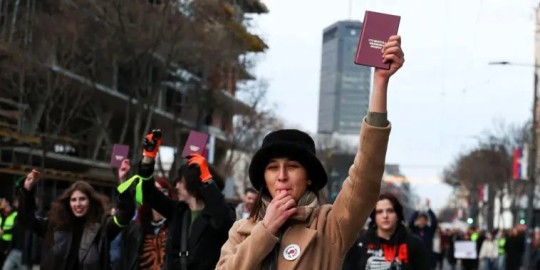
Blockades began at the Faculty of Dramatic Arts in Belgrade in the second half of November. Unlike earlier protests, the student revolt does not have a single organizer or 'face' of the protest, instead they decide everything by voting at the plenum, in a kind of direct democracy.
However, when they are on the streets, it seems that everyone knows their duty.
Although they do not have a center from which to coordinate blockades at individual faculties, the way they are organized is similar.
While students at the end of the 1990s, when a large protest was organized due to the theft of local elections during the regime of Slobodan Milošević, agreed live on the next steps, today's generations of students are technologically oriented.
On various applications and platforms of social networks, they share information about the schedule of events at the university and this is how they most often agree on shifts at blockades and other actions.
So far, there have been countless protests across the country without any violence. Students want to peacefully achieve their goal and the change they are striving for.
They want their country to be safe for everyone, to be able to rely on their government to do its job. They have opened many doors for older and newer generations to join in and fight for justice without fear.
Video by sviublokade.fdu
#serbia#novi sad#belgrade#beograd#srbija#protest#student#students#student life#podrškablokadama#blokada#blockade#blockades#studenti#justice#nonviolence#freedom#democracy#liberation#nobel peace prize#nobel prize
8 notes
·
View notes
Text
If you're feeling nervous or stressed after last night, remember to breathe. Focus on the areas in life you can control.
Do something nice with friends who might be struggling right now. Advocate for/donate to LGBTQ+ charities and businesses. Volunteer to support services you don't want to see disappear. If something starts happening that you disagree with, form or join a protest. Be nonviolent, but don't be silent.
The government is supposed to represent its people. If it doesn't? Stand up and let them know
#protesting helped end segregation#and support LGBTQ rights#and women's suffrage#be nonviolent#but dont be silent#presidential election#election 2024#us elections
17 notes
·
View notes
Text
instagram
Meanwhile, in France! 😍
#fight facism#women unite#international women's day#protest#resistance#nonviolent resistance#france#Instagram
3 notes
·
View notes